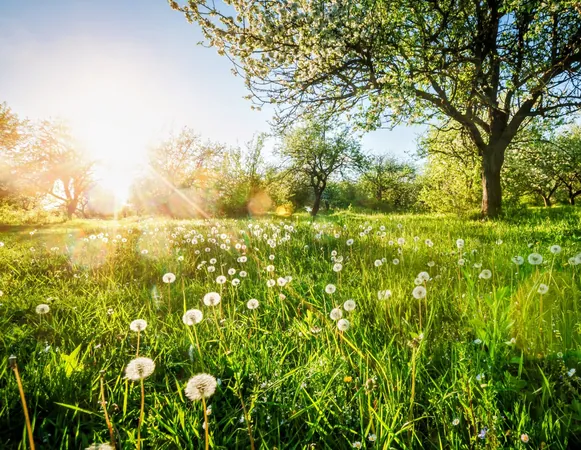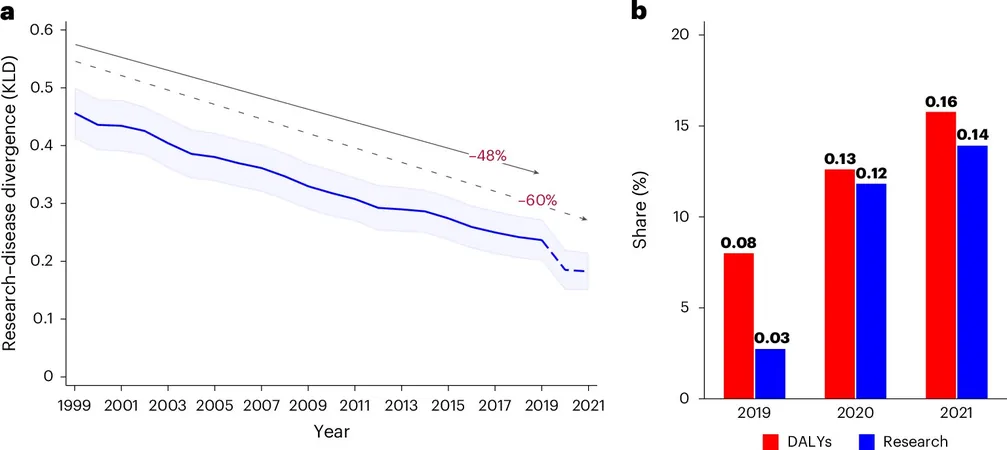
Shocking Seasonal Shifts: How Distance Changes Nature's Clock
2025-09-05
Author: Jacques
Nature's Variability: Seasons Aren't Universal
Did you know that Earth's seasons can take on a completely different rhythm within just a few miles? A groundbreaking global study has revealed how seasonal changes in plant activity can vary dramatically, sometimes in neighboring landscapes.
Unlocking the Secrets with Satellite Data
This innovative research, spearheaded by Drew E. Terasaki Hart from UC Berkeley, harnessed two decades of satellite observations to decode the seasonal patterns of plant growth and dormancy. By mapping these patterns, scientists can bypass the guesswork and directly observe the signals of ecosystem activity.
Understanding Phenology: The Science of Seasonal Timing
Known as phenology, the study details how plant communities respond throughout the year. By employing two vital metrics—near-infrared reflectance of vegetation (NIRV) and solar-induced chlorophyll fluorescence (SIF)—researchers could accurately track energy capture and use in plants, providing insight on periods of growth and inactivity.
The Startling Discovery: Seasons Out of Sync
Their findings painted a vivid picture, showcasing regions where seasons shift rapidly over minimal distances. Hotspots were prevalent in Mediterranean climates and tropical mountain areas, where geographical features influence localized weather patterns. For instance, cities in the U.S. Southwest just 100 miles apart can operate on entirely different rainfall schedules.
The Importance of Timing in Nature
The implications of these seasonal discrepancies are profound. A 2017 review indicated that mating at different times can lead to reduced genetic flow among populations, essentially fueling evolutionary divergence. The new study's maps emphasize how these timing breaks correlate with differences in flowering periods and even genetic variations in plant species.
Agriculture's Delicate Balance: Working Around Nature's Clock
For farmers, understanding these timing shifts is crucial. In Colombia, for example, coffee growers strategically plan around two harvest windows, influenced by the very different seasonal cues created by local geography. Such variations can dictate everything from when crops ripen to when labor is required.
Decoding the Data: A Comprehensive Global Map
By analyzing two decades of satellite data, the research team developed a robust map that identifies areas where seasonal timing varies significantly. Shifts in rainfall and temperature were found to be the principal drivers of these changes, particularly in mountainous terrains.
Consequences for Wildlife and Ecology
Wildlife, particularly migratory species and pollinators, may struggle to adapt as resources become available at differing times across landscapes. Conservationists can utilize these maps to identify regions at risk of species splitting into locally timed groups, enabling better habitat management.
Climate Change: The Wild Card in Seasonal Patterns
As climate change progresses, shifting rainfall and increasing temperatures could further misalign seasonal cues. This shift is especially critical in areas already displaying high variability in timing.
It’s Time to Pay Attention to Timing
This intricate dance of seasonal timing—a quiet factor that often goes unnoticed—plays a crucial role in everything from young animals finding food to the success of agricultural practices. Recognizing where seasonal timings diverge can turn uncertainties into informed strategies for planning and adaptation.
Final Thoughts: The Ripple Effect of Seasonal Differences
The takeaway is clear: seasons significantly influence biodiversity, ecology, and economic frameworks—but they don’t adhere to a uniform pattern everywhere. Understanding these nuances is essential for adapting to the dynamic interactions within our ecosystems.









 Brasil (PT)
Brasil (PT)
 Canada (EN)
Canada (EN)
 Chile (ES)
Chile (ES)
 Česko (CS)
Česko (CS)
 대한민국 (KO)
대한민국 (KO)
 España (ES)
España (ES)
 France (FR)
France (FR)
 Hong Kong (EN)
Hong Kong (EN)
 Italia (IT)
Italia (IT)
 日本 (JA)
日本 (JA)
 Magyarország (HU)
Magyarország (HU)
 Norge (NO)
Norge (NO)
 Polska (PL)
Polska (PL)
 Schweiz (DE)
Schweiz (DE)
 Singapore (EN)
Singapore (EN)
 Sverige (SV)
Sverige (SV)
 Suomi (FI)
Suomi (FI)
 Türkiye (TR)
Türkiye (TR)
 الإمارات العربية المتحدة (AR)
الإمارات العربية المتحدة (AR)